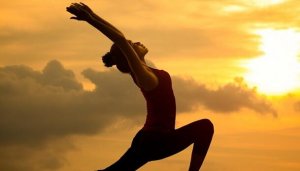Seitai: the Culture of Harmony and Health


Written and verified by the psychologist Valeria Sabater
Seitai is movement, bodily harmony, and health. It is a practice with roots in traditional Japanese culture created by therapist Haruchika Noguchi. Seitai is above all the art of spontaneous movement. It is capable of regenerating us, relieving tension, and giving us wonderful energy.
Maybe you’ve never heard the term “seitai” before. Perhaps you think it’s like yoga, taichi, or mindfulness. In fact, seitai is not in the same family as these other practices. It is not a discipline where movements are carefully planned out, or where there are different strategies with their own therapeutic ends.
It is not a therapy, nor a meditation technique, nor even a spiritual discipline. In reality, it’s something better, and perhaps more ambitious. Seitai is a culture that orients us towards a simpler existence, where we can return to intensely trust life, and where we are also capable of improving our physical and mental health.
“Let your body move spontaneously, and it will find balance on its own. Trusting this innate intelligence is the key to Seitai culture ”
-Laura López Coto-

Seitai, or the importance of healthy movement
Movement is life, we all know this. However, sometimes we get confused. Sometimes, we do other movements that actually detract from our health, inner balance, and well-being.
In Alice in Wonderland, for example, there is a metaphor that perfectly fits our current society. When Alice arrives at the Queen of Heart’s kingdom, she discovers that the inhabitants are forced to run in order to stay in the same place. If they want to go anywhere new, they have to run “even faster”.
That’s exactly what we do too. We run faster every day because every day our world demands more of us. However, this type of movement goes against our own body. Sometimes, even your mind goes faster than your life, and your body is slower than you want it to be. We get rusty, because tension and stress grip us. Pain appears, then fatigue, and we don’t know how much longer we can last…
Society conditions us, that is something we know. Seitai reminds us of that. From there, it suggests that we do another type of movement, a regenerative, life-giving, spontaneous movement where each part of us (the physical, the mental, and the energy within us) get back in harmony.

Benefits of seitai
As we said, sentai is a type of culture. Katsugen Undo is a fundamental part of it and invites us to do something we’re not used to: move freely and in accordance with our needs.
When someone goes into a Katsugen Undo class for the first time, they’ll see everyone moving however they like, stretching, dancing with their eyes closed, lying on the floor… This gives you an idea of how cathartic this type of exercise can be. The benefits are remarkable. It can:
- Relieve and prevent back pain. These movements help correctly align your spine and make it more flexible.
- Release your worries and tension. It reduces stress and helps you manage it better in your day-to-day life.
- Awaken positive emotions in you. You feel more animated, free, and open to experiences.
- Improve your self-confidence
- Improve your digestive health and immune system.

Seitai, freedom of movement
In seitai, we each express ourselves in our own way and move how we like. In addition, there is one thing in particular we should also note: Katsugen Undo emphasizes the spinal column.
These movements are free, but we should make sure that everything is in harmony so that your spine is safe. To do so, use breathing techniques. Let’s look at some basic exercises:
- Look up and stand on your toes. Relax, and breathe deeply.
- Move your shoulders forward for a few seconds, then move them back to where they were. Repeat this movement as you walk slowly.
- Move your waist from the left to the right, keeping your spine straight. Accompany this movement with your arms.
- Move your abdomen, your pelvis, your belly, and exercise this area slowly, without forcing anything, but working to increase flexibility, freedom of movement, and strength.
Listen to your body, trust it, and let it direct harmony in your movements.
This text is provided for informational purposes only and does not replace consultation with a professional. If in doubt, consult your specialist.








